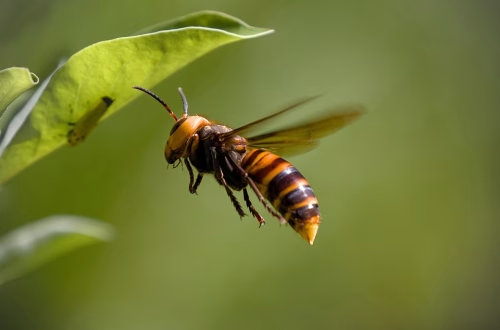Summary:
Commercial pest control contracts are essential for businesses to maintain hygiene, comply with regulations, and protect their reputation. These contracts outline preventive measures, treatment plans, and legal responsibilities for pest management in commercial settings. Key issues include compliance with state and federal pest control laws, preventing infestations of rodents, insects, and other pests, and minimizing financial and legal risks. Businesses in food service, hospitality, healthcare, and retail are particularly affected. A well-structured pest control contract ensures long-term protection, operational continuity, and customer trust.
What This Means for You:
- Legal Compliance: Ensure your business meets health and safety regulations by securing a pest control contract tailored to your industry.
- Cost Savings: Prevent expensive infestations and property damage by investing in proactive pest management services.
- Reputation Protection: Avoid negative reviews or shutdowns due to pest-related violations by maintaining regular inspections.
- Future Risks: Climate change and urbanization are increasing pest activity—businesses must adapt with stronger prevention strategies.
Commercial Pest Control Contracts Explained:
Commercial Pest Control Contracts are legally binding agreements between businesses and pest control providers that outline the scope, frequency, and methods of pest prevention and elimination. These contracts ensure consistent monitoring and treatment to maintain a pest-free environment in commercial spaces such as restaurants, warehouses, offices, and healthcare facilities. A well-structured contract includes emergency response protocols, compliance with health codes, and customized solutions based on the business’s specific needs.
These contracts typically cover routine inspections, chemical and non-chemical treatments, documentation of pest activity, and compliance reporting. They are crucial for industries where pest infestations can lead to regulatory fines, business closures, or reputational damage. By formalizing pest management services, businesses can mitigate risks while ensuring a safe and hygienic environment for employees and customers.
Types of Pest Issues:
Commercial properties face a variety of pest threats, including rodents (rats, mice), insects (cockroaches, bed bugs, flies), and stored product pests (weevils, moths). Each pest type presents unique challenges—rodents can damage infrastructure and spread disease, while insects like cockroaches trigger health code violations. In food service and hospitality, bed bugs can lead to customer complaints and lawsuits, making proactive control essential.
State and federal regulations, such as the Food Safety Modernization Act (FSMA) and OSHA guidelines, mandate strict pest control measures in certain industries. For example, restaurants must adhere to local health department inspections, while warehouses storing food products must comply with FDA pest prevention standards. Failure to address these issues can result in fines, legal action, or forced closures.
Common Pest Control Methods:
Effective commercial pest control combines preventive measures, chemical treatments, and integrated pest management (IPM) strategies. IPM focuses on long-term prevention through sanitation, exclusion (sealing entry points), and monitoring rather than relying solely on pesticides. For example, restaurants may use bait stations for rodents, insect growth regulators for flies, and heat treatments for bed bugs.
Eco-friendly solutions, such as botanical insecticides and pheromone traps, are gaining popularity due to stricter environmental regulations. Some businesses also employ digital monitoring systems that use sensors to detect pest activity in real time. Successful strategies depend on regular inspections, employee training, and adapting to seasonal pest behavior.
Risks and Consequences:
Ignoring pest control can lead to severe financial and operational consequences. Infestations may result in contaminated products, forcing recalls or disposal of inventory. Health violations can trigger fines, lawsuits, or loss of business licenses, particularly in food and healthcare sectors. Additionally, pests like termites or carpenter ants can cause structural damage, leading to costly repairs.
Reputational harm is another critical risk—online reviews or media coverage of pest problems can deter customers and partners. For franchises or chain businesses, one location’s infestation can damage the entire brand’s credibility. Proactive pest control contracts minimize these risks by ensuring compliance and rapid response to emerging threats.
Choosing a Pest Control Service:
Selecting the right pest control provider is crucial for effective long-term management. Look for companies with experience in your industry, proper licensing, and certifications such as those from the National Pest Management Association (NPMA). Verify their use of EPA-approved treatments and compliance with state regulations.
Key factors include customizable contract options, emergency service availability, and transparency in reporting. Ask for references from similar businesses and review their pest management plans. A reputable provider will offer a combination of prevention, treatment, and documentation to ensure compliance and safety.
People Also Ask About:
- How often should a commercial property be inspected for pests? Most businesses require monthly inspections, but high-risk industries like food service may need bi-weekly visits. Frequency depends on location, pest pressure, and regulatory requirements.
- Are eco-friendly pest control methods effective? Yes, many green solutions, such as heat treatments and biological controls, are highly effective and comply with strict environmental standards.
- What should a pest control contract include? Contracts should specify service frequency, treatment methods, emergency protocols, and compliance documentation. Always review liability clauses and cancellation terms.
- Can pests develop resistance to treatments? Yes, pests like bed bugs and rodents can become resistant to certain chemicals, emphasizing the need for integrated pest management (IPM) strategies.
- Who is responsible for pest control in a leased commercial space? Responsibility depends on the lease agreement. Tenants typically handle interior pest control, while landlords manage structural or exterior issues.
Expert Opinion:
Commercial pest control is evolving with advancements in technology and stricter regulations. Businesses must prioritize prevention over reactive treatments to avoid escalating costs and liabilities. Emerging trends include AI-driven monitoring systems and increased demand for non-toxic solutions. Experts warn that delaying pest management can lead to irreversible damage—early intervention is key to long-term success.
Related Key Terms:
- Commercial pest control services for restaurants
- Integrated Pest Management (IPM) for businesses
- Pest control contract requirements by state
- FDA pest control compliance for food facilities
- Eco-friendly pest control solutions for offices
- Emergency pest control services for warehouses
- Cost of commercial pest control contracts
Pest Control Disclaimer
This content is for educational purposes only and does not replace professional pest inspection, treatment, or safety advice. Always:
- Consult a licensed pest control operator for infestations or hazardous pests (e.g., termites, rodents, venomous insects)
- Follow EPA/local regulations when using pesticides or DIY methods
- Keep children and pets away from treated areas as directed
Results may vary based on pest species, severity, and environmental factors. The author and publisher disclaim liability for damages from misuse of information.
*Featured image sourced by Pixabay.com




